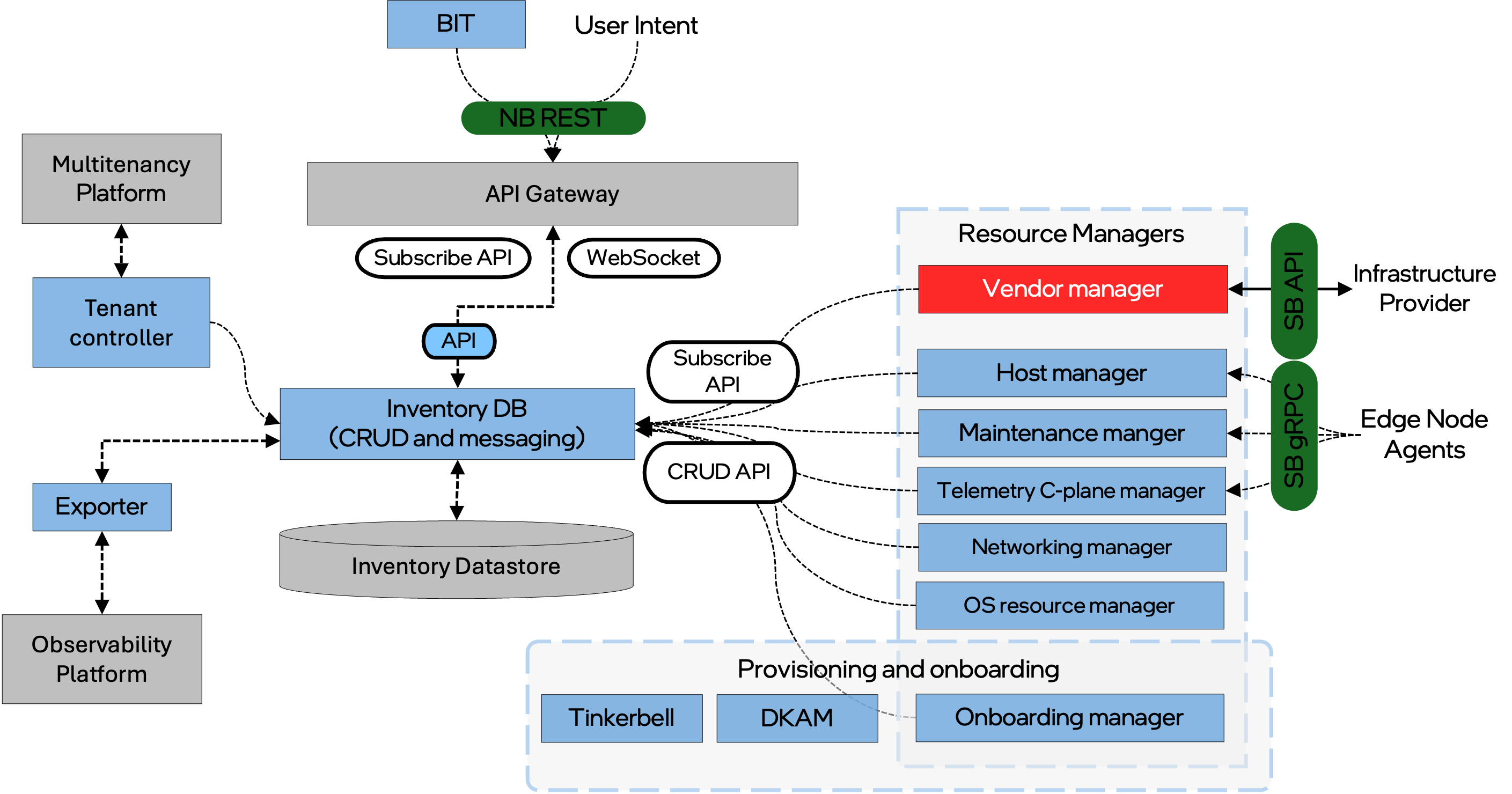High-Level Architecture#
Architecture Diagram#
Edge Infrastructure Manager is modular and extensible and it enables the integration of new components and services. The high-level architecture of the platform is shown in the following figure:

Key components#
Edge Infrastructure Manager is a framework that provides users with APIs to manage, monitor, control and perform overall lifecycle management of physical equipment inventory deployed at the edge locations. It is made up of the following key components and services:
API provides a northbound REST API that can be accessed by users and other Open Edge Platform services. It is a horizontally scalable stateless service.
Inventory which is the state store and the only component that persists state in Edge Infrastructure Manager. It works in a declarative manner, by storing for some of the abstractions not only the current state but also the desired state. Inventory is a key component of the system, as it is the source of truth for Edge Infrastructure Manager, and is used by all the Resource Managers to determine what actions need to be taken.
Resource Managers reconcile user intents from desire to reality, and adapt from the high-level inventory abstractions to actual hardware and configurations performed in the edge infrastructure. Managers works in tandem with the Edge Node agents to perform the actual work on the edge infrastructure. Resource Managers are modular, stateless and, depending on the varieties of infrastructure required or available, different sets of Resource Managers will be deployed.
Provisioning and Onboarding Subsystem drives Onboarding (device discovery) and Provisioning (OS installation on Edge Nodes) processes. Internally, it leverages the Tinkerbell engine to perform the initial bootstrapping and remote provisioning of Edge Nodes with the help of other Edge Infrastructure Manager components, namely Dynamic Kit Adaptation Module (DKAM) and Onboarding Manager.
Inventory Exporter exports, using a Prometheus* toolkit compatible interface, Inventory metrics that cannot be collected directly from the edge node software. Observability services then scrape those metrics.
Tenant Controller orchestrates tenant creation and deletion within the Edge Infrastructure Manager domain.
Bulk Import Tools (BIT) are tools that automate the registration of multiple edge nodes in Edge Infrastructure Manager.
Note
Edge Node Agents are optional software that may be needed under a Resource Manager when the infrastructure component does not have an external API, or needs a more complicated interaction to be implemented. The connection between Agent and Resource Manager is implementation specific, and may depend on a variety of factors, but typically the Agent would contact the Resource Manager in order to cross network boundaries.
Note
Resource managers also work with downstream services (called “Providers”) that exposes an API to control and manage the infrastructure giving the birth to a layered architecture.